L2 Brain Controls Thoughts, Feelings, and Behavior
一、The Major Structures in the Human Brain
三沟五叶 (3 sulci, 5 lobes)
1. 大脑沟回

2. The Important Area in Brain
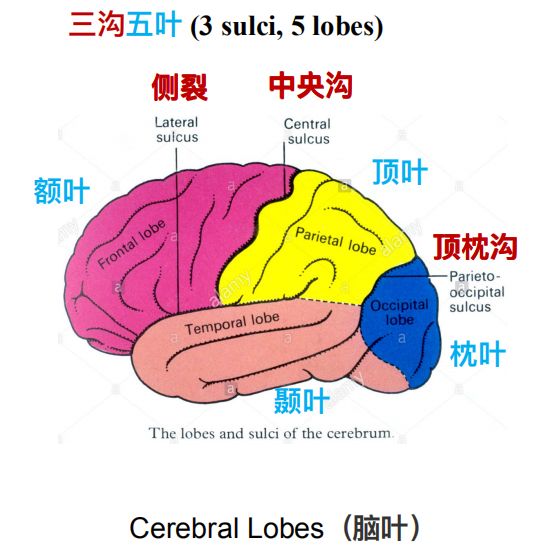
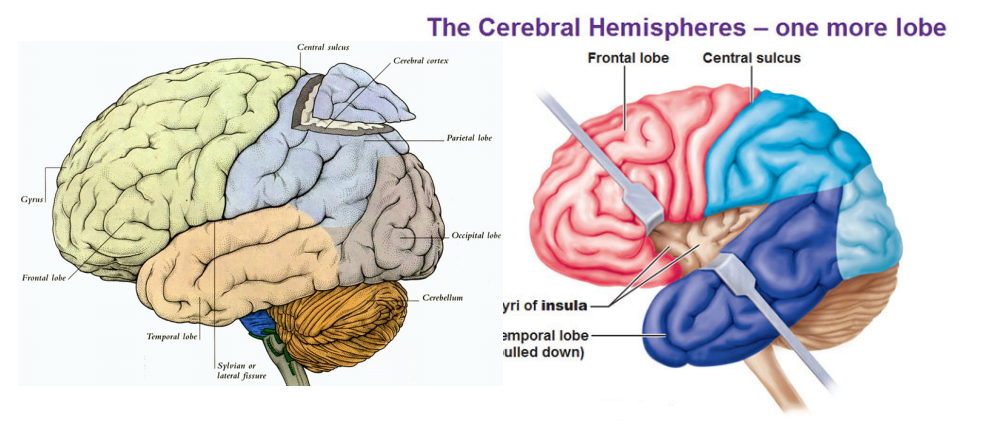
Lobes:
- Frontal lobe 额叶
- Parietal lobe 顶叶
- Occipital lobe 枕叶
- Temporal lobe 颞叶
- Insula lobe 岛叶
Sulci:
- Lateral sulcus 侧裂
- Central sulcus 中央沟
- Parietooccipital sulcus 顶枕沟
二、The “old brain”
The “old brain”: Wired for Survival
- The innermost structures of the brain—the parts nearest the spinal cord—are the oldest part of the brain, and these areas carry out the same the functions they did for our distant ancestors.
The “old brain” regulates basic survival functions, such as breathing, moving, resting, and feeding, and creates our experiences of emotion.
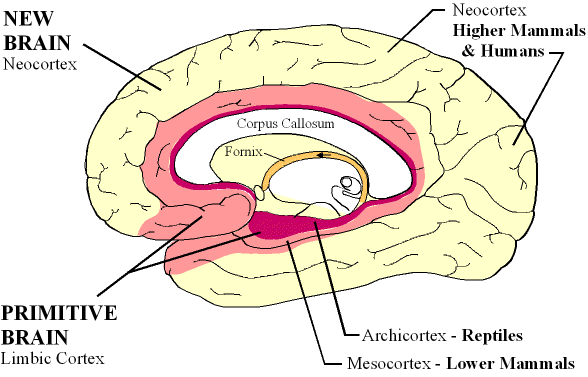
- One Old Brain: One of our brains is very old. It began to evolve when the amphibians crawled onto land to give rise to the reptilian age(催生了爬行动物时代). It is over 400 million years old and yet it remains structured into the anatomy of our human brain.
The Basic Structure of “Old Brain”
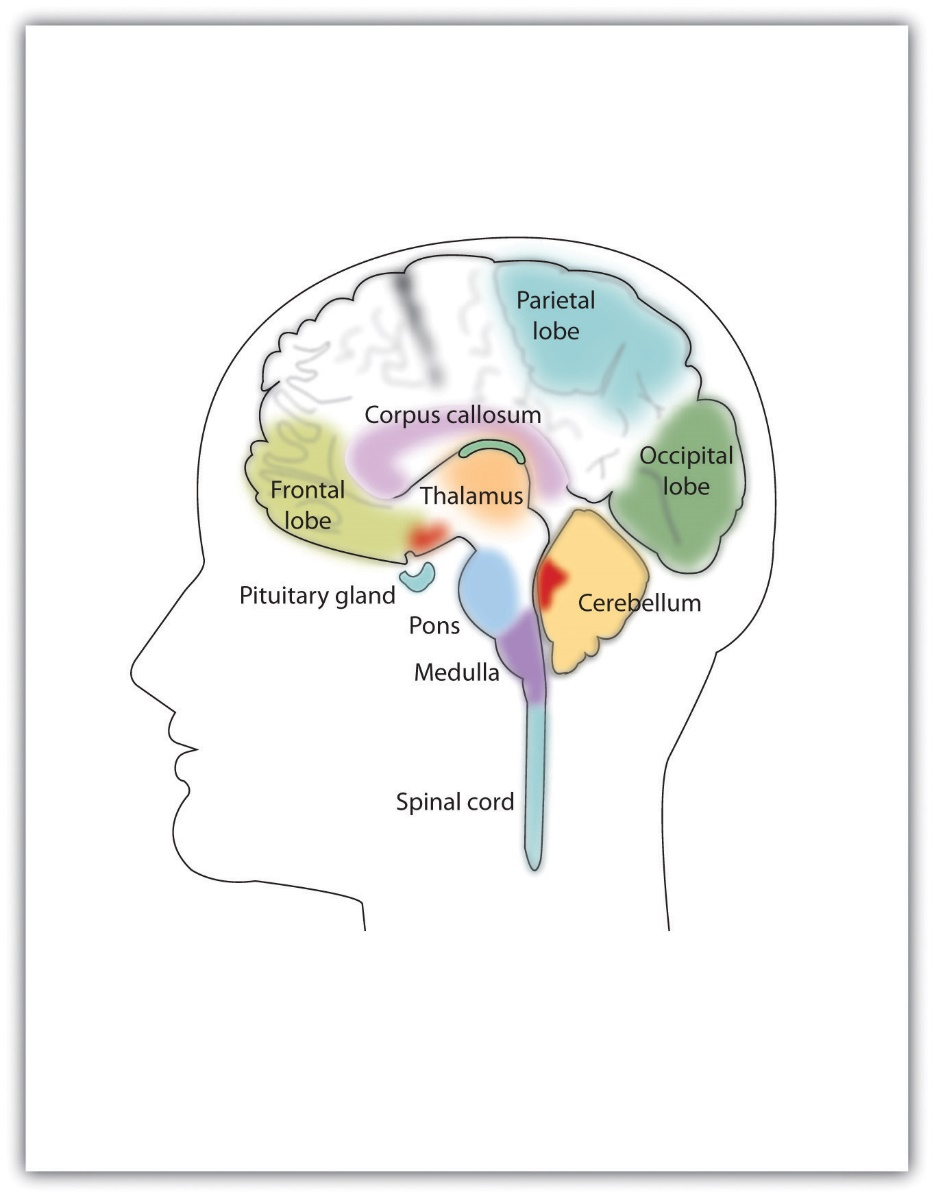
- Brian stem (脑干)
- Thalamus (丘脑)
- Cerebellum (⼩脑)
- limbic system (边缘系统)
1. Brain Stem
Medulla 延脑

The brain stem begins where the spinal cord enters the skull and forms the medulla (延脑), the area of the brain stem that controls heart rate and breathing
In many cases the medulla alone is sufficient to maintain life—animals that have the remainder of their brains above the medulla severed are still able to eat, breathe, and even move
Pons 脑桥
The spherical shape above the medulla is the pons(脑桥), a structure in the brain stem that helps control the movements of the body, playing a particularly important role in balance and walking.
Reticular Formation 脑干网状结构
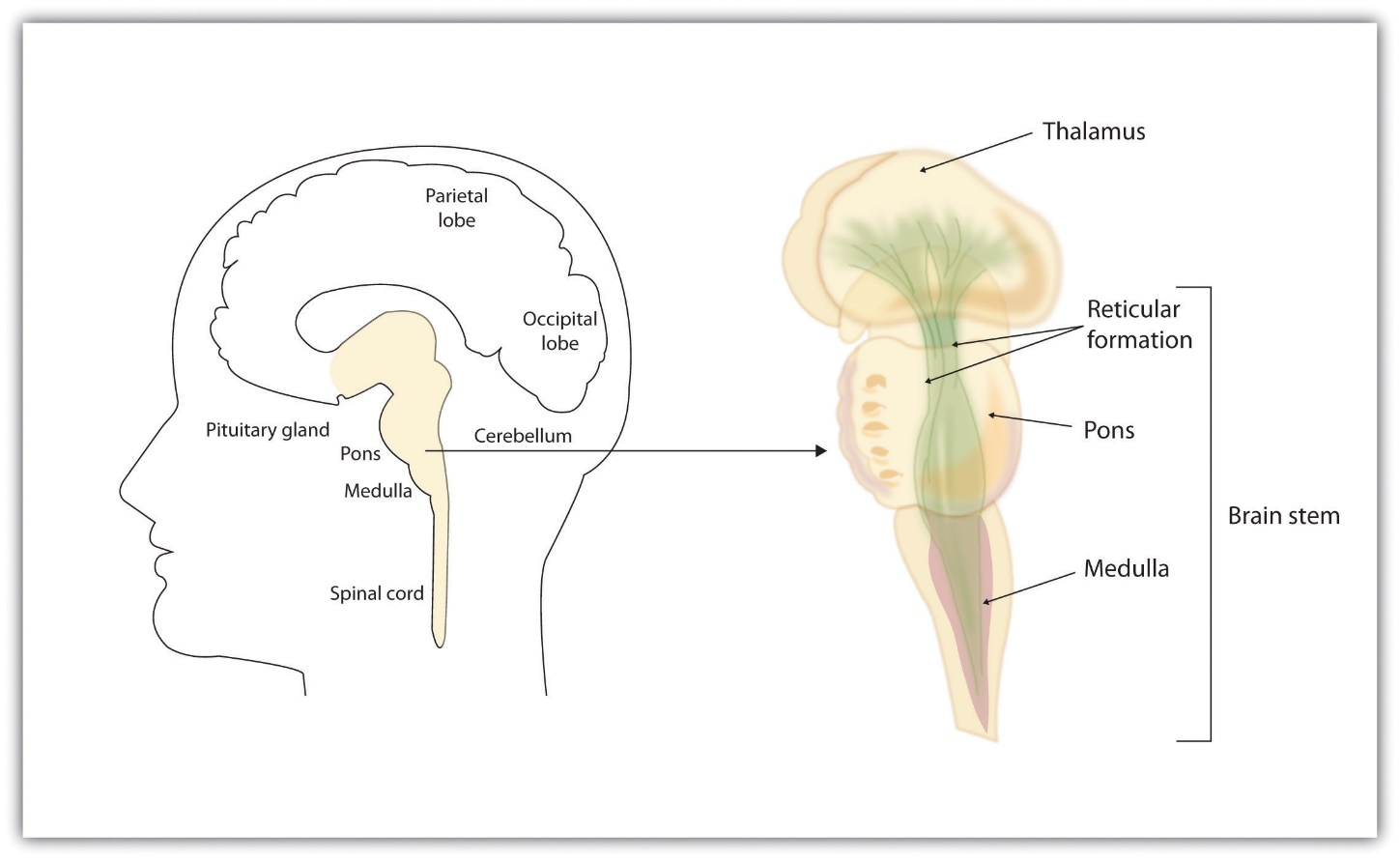
Running through the medulla and the pons is a long, narrow network of neurons known as the reticular formation
The job of the reticular formation is to filter out some of the stimuli that are coming into the brain from the spinal cord and to relay the remainder of the signals to other areas of the brain.
The reticular formation also plays important roles in walking, eating, sexual activity, and sleeping
When electrical stimulation is applied to the reticular formation of an animal, it immediately becomes fully awake, and when the reticular formation is severed from the higher brain regions, the animal falls into a deep coma.
2. Thalamus 丘脑
The thalamus is the egg-shaped structure above the brain stem that applies still more filtering to the sensory information that is coming up from the spinal cord and through the reticular formation, and it relays some of these remaining signals to the higher brain levels (Guillery & Sherman, 2002).
The thalamus also receives some of the higher brain’s replies, forwarding them to the medulla and the cerebellum.
Most neurologists refer to the thalamus as the brain’s relay station. That’s because almost all sensory information (with the exception of smell) must pass through it before moving on to the cerebral cortex.
- The thalamus is subdivided into a number of nuclei that possess functional specializations for dealing with particular types of information. For example, visual information from your retina travels to the lateral geniculate nucleus of the thalamus, which is specialized to handle visual information, before being sent on to the primary visual cortex
One of the main processes that the thalamus controls is the regulation of consciousness and sleep. In fact, during sleep, the thalamus actually blocks sensory signals from reaching the rest of the brain. This allows a person to sleep without disturbance.
Finally, the thalamus acts as a bridge between the primary motor cortex and the cerebellum and thus plays a crucial role in muscular movement.
Side Effects of Thalamus Damage After Brain Injury
Caused by hemorrhage (出⾎) or thrombosis of arteries (动脉⾎栓)
- Sensory issues such as tingling, numbness, hypersensitivity, and pain
- Vision loss or Decresed light sensitivity
- Motor impairments 运动障碍
- Tremors 震动、颤抖
- Attention problems
- Memory loss
- Insomnia or coma 失眠或昏迷
3. Cerebellum 小脑
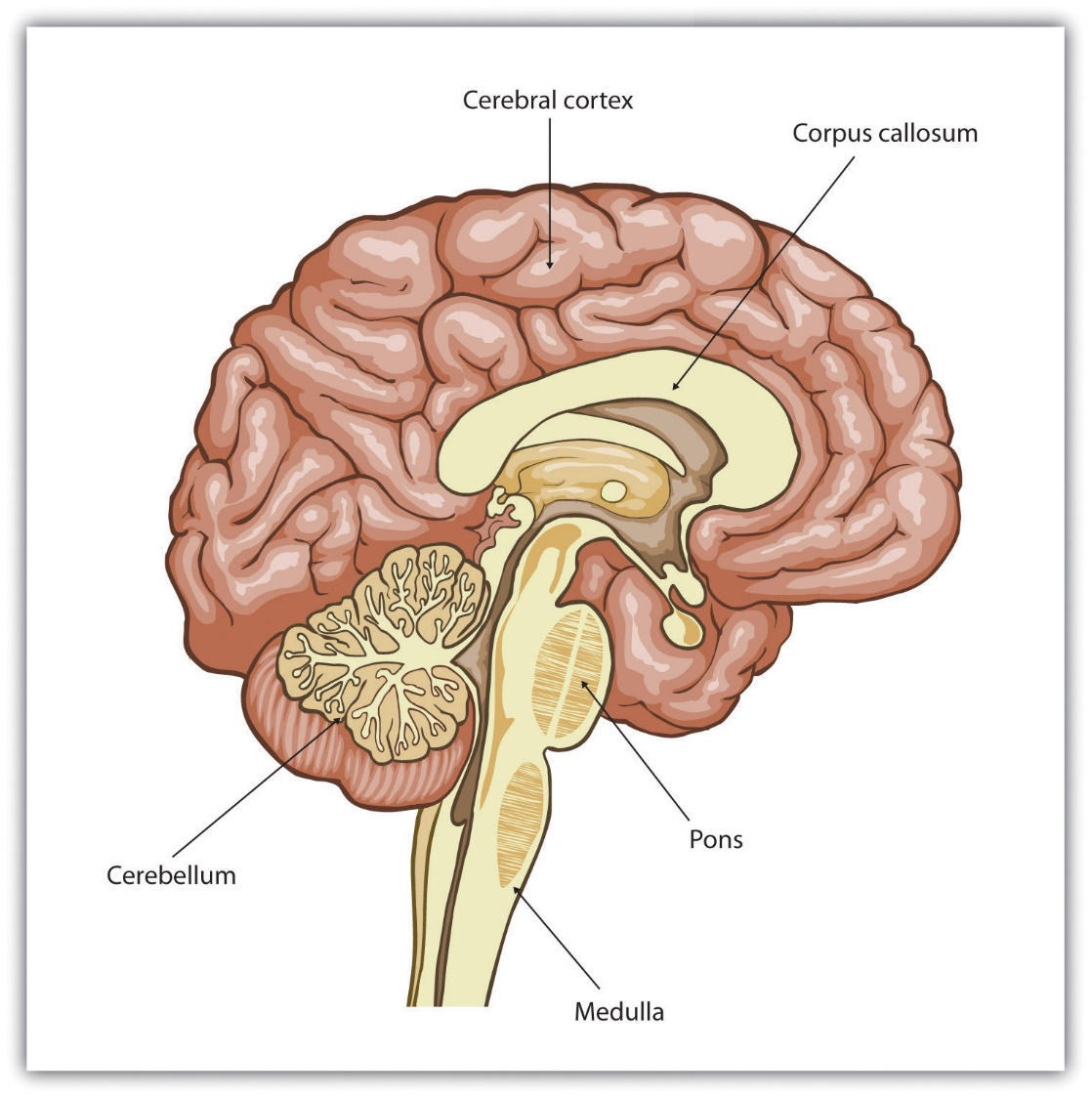
The cerebellum (literally, “little brain”⼩脑) consists of two wrinkled ovals behind the brain stem. It functions to coordinate voluntary movement. People who have damage to the cerebellum have difficulty walking, keeping their balance, and holding their hands steady.
Consuming alcohol influences the cerebellum, which is why people who are drunk have more difficulty walking in a straight line. Also, the cerebellum contributes to emotional responses, helps us discriminate between different sounds and textures, and is important in learning (Bower & Parsons, 2003).
4. Limbic System 边缘系统

The limbic system is located between the brain stem and the two cerebral hemispheres
Whereas the primary function of the brain stem is to regulate the most basic aspects of life, including motor functions, the limbic system is largely responsible for memory and emotions, including our responses to reward and punishment.
It includes the amygdala(杏仁核), the hypothalamus(下丘), and the hippocampus(海⻢)
Amygdala 杏仁核
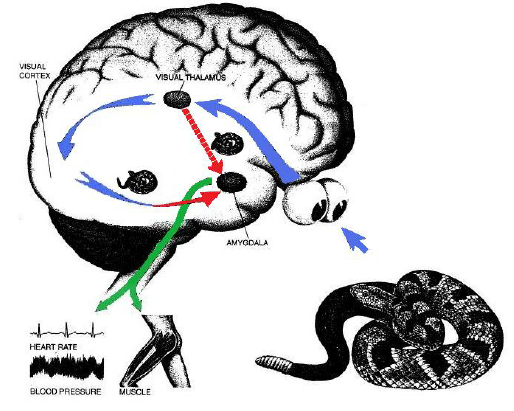
The amygdala is primarily responsible for regulating our perceptions of, and reactions to, aggression and fear.
- The amygdala has connections to other bodily systems related to fear, including the sympathetic nervous system (which we will see later is important in fear responses), facial responses (which perceive and express emotions), the processing of smells, and the release of neurotransmitters related to stress and aggression (Best, 2009).
Hypothalamus 下丘脑
Located just under the thalamus (hence its name) the hypothalamus is a brain structure that contains a number of small areas that perform a variety of functions, including the important role of linking the nervous system to the endocrine system via the pituitary gland (脑下垂体)
- The hypothalamic–pituitary–adrenal axis ,HPA or HTPA axis (下丘脑-垂体-肾上腺轴、HPA轴或HTPA轴)
Functions regulated by the hypothalamus:
- Temperature
- fighting
- fleeing
- feeding
- drinking
- sexual behavior
- responds to the satisfaction of these needs by creating feelings of pleasure
Hippocampus 海马体
The hippocampus is important in storing information in long-term memory. If the hippocampus is damaged, a person cannot build new memories, living instead in a strange world where everything he or she experiences just fades away, even while older memories from the time before the damage are untouched
三、The Cerebral Cortex
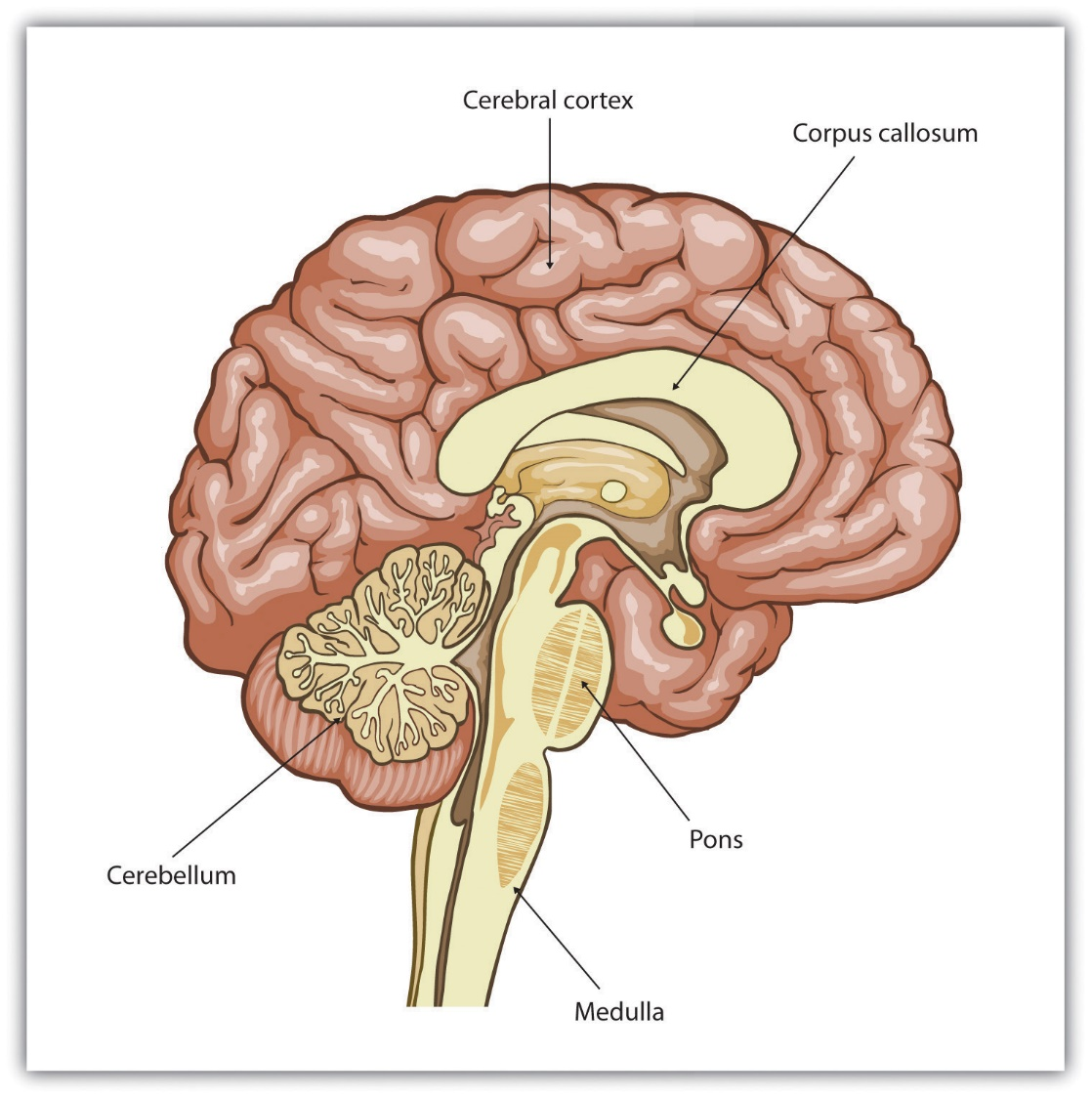
Mammals, including humans, have developed further brain layers that provide more advanced functions—for instance, better memory, more sophisticated social interactions, and the ability to experience emotions
Humans have a very large and highly developed outer layer known as the cerebral cortex, which makes us particularly adept at these processes
Consciousness and Thinking
The key to the advanced intelligence of humans is not found in the size of our brains. What sets humans apart from other animals is our larger cerebral cortex—the outer bark-like layer of our brain that allows us to so successfully use language, acquire complex skills, create tools, and live in social groups (Gibson, 2002).
- In humans, the cerebral cortex is wrinkled and folded, rather than smooth as it is in most other animals. This creates a much greater surface area and size, and allows increased capacities for learning, remembering, and thinking.
- The folding of the cerebral cortex is referred to as corticalization(⽪质形成).
Functions of Lobes
1. Frontal Lobe 额叶
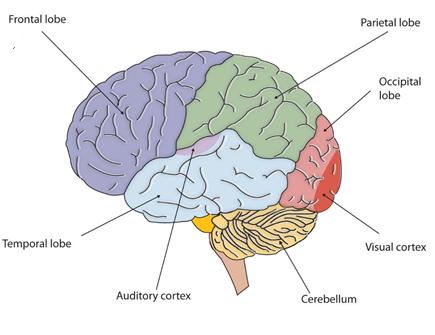
Frontal lobe (behind the forehead), which is responsible primarily for thinking, planning, memory, and judgment.
2. Parietal Lobe 顶叶
Following the frontal lobe is the parietal lobe, which extends from the middle to the back of the skull and which is responsible primarily for processing information about touch.
3. Occipital Lobe 枕叶
The occipital lobe, at the very back of the skull, which processes visual information
4. Tempopral Lobe 颞叶
Finally, in front of the occipital lobe (pretty much between the ears) is the temporal lobe, responsible primarily for hearing and language.
5. Insula
The Insula, the Source of Our Emotions and Empathy
Neuroplasticity 神经可塑性
The control of some specific bodily functions, such as movement, vision, and hearing, is performed in specified areas of the cortex, and if these areas are damaged, the individual will likely lose the ability to perform the corresponding function. For instance, if an infant suffers damage to facial recognition areas in the temporal lobe, it is likely that he or she will never be able to recognize faces (Farah, Rabinowitz, Quinn, & Liu, 2000).
- On the other hand, the brain is not divided up in an entirely rigid way. The brain’s neurons have a remarkable capacity to reorganize and extend themselves to carry out particular functions in response to the needs of the organism, and to repair damage.
- As a result, the brain constantly creates new neural communication routes and rewires existing ones.
Neuroplasticity refers to the brain’s ability to change its structure and function in response to experience or damage.
- Neuroplasticity enables us to learn and remember new things and adjust to new experiences
Our brains are the most “plastic” when we are young children, as it is during this time that we learn the most about our environment. On the other hand, neuroplasticity continues to be observed even in adults (Kolb & Fantie, 1989).
Plasticity is also observed when there is damage to the brain or to parts of the body that are represented in the motor and sensory cortexes.
- When a tumor in the left hemisphere of the brain impairs language, the right hemisphere will begin to compensate to help the person recover the ability to speak (Thiel et al., 2006).
- And if a person loses a finger, the area of the sensory cortex that previously received information from the missing finger will begin to receive input from adjacent fingers, causing the remaining digits to become more sensitive to touch (Fox, 1984).
Brain Lateralization 大脑侧化
brain lateralization—the idea that the left and the right hemispheres of the brain are specialized to perform different functions
In most people the ability to speak, write, and understand language is located in the left hemisphere. The left hemisphere is also better at math and at judging time and rhythm
The right hemisphere, on the other hand, has only very limited verbal abilities, and yet it excels in perceptual skills. The right hemisphere is able to recognize objects, including faces, patterns, and melodies, and it can put a puzzle together or draw a picture.
We normally use both hemispheres at the same time, and the difference between the abilities of the two hemispheres is not absolute (Soroker et al., 2005).
四、Summary
- The Old Brain: Wired for Survival
- Brain stem: breathing, heart rate, walking and balance
- Thalamus: brain relay station
- Cerebellum: coordinates voluntary movement
- Limbic system:
- Amygdala: fearing memory & emotion & social cognition
- Hypothalumus: temperature, fighting, fleeing, feeding, sex, pleasure
- Hippocampus: learning and memory & spatial cognition
- The cerebral cortex: Creates Consciousness and Thinking
- Frontal lobe: processing high cognitive function,, working memory & decision making
- Partial lobe: processing information about touch.
- Occipital lobe: processes visual information.
- Temporal lobe: processes hearing and language.